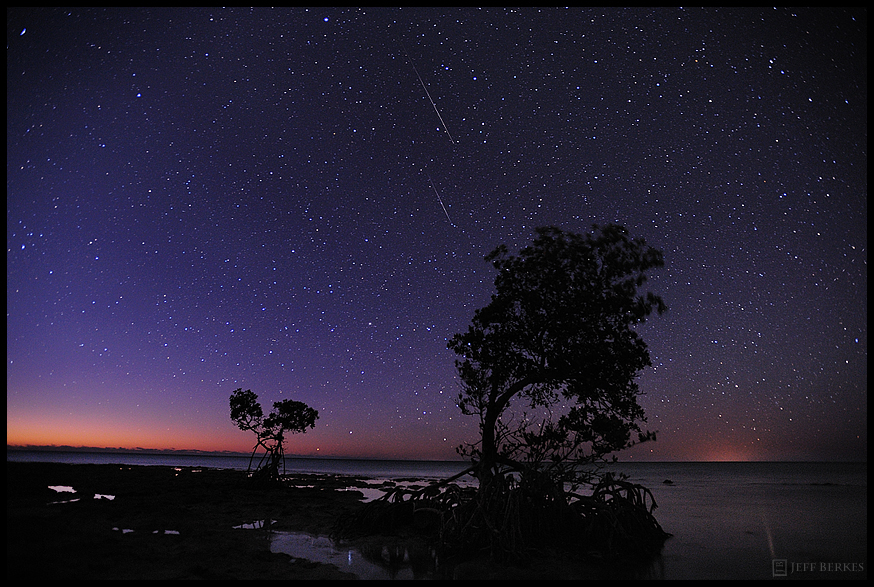The 2020 Quadrantid Meteor Shower Peaks Soon. Here's What to Expect.

Early Saturday morning (Jan. 4), a strong display of Quadrantid meteors is likely for Europe and North America. In the United States and Canada, eastern observers are favored, as maximum activity is expected at about 4 a.m. EST (0900 GMT). At that time, the radiant of the shower — the point from which meteors will appear to originate — will be well up in the dark northeastern sky. This is perfect timing, as it falls right in our prime meteor-watching hours before dawn.
The meteors appear to radiate from a spot on the sky midway between the head of Draco, the dragon, and the last star on the handle of the Big Dipper. The radiant is actually located within the boundaries of the constellation of Boötes, the herdsman, so we might expect them to be called the "Boötids," as meteor showers are typically named for the constellations in which their radiants are located. But back in the late 18th century, there was a constellation between the constellations of Boötes and Draco and near the tail of Ursa Major, called Quadrans Muralis, the "mural or wall quadrant" (an astronomical instrument). It is a long-outmoded star pattern, invented in 1795 by J.J. Lalande to commemorate the instrument used to observe the stars in his catalog.
Adolphe Quetelet of Brussels Observatory discovered the shower in the 1830s; shortly afterward, it was noted by several astronomers in Europe and America. Thus, the meteors were christened Quadrantids, and even though the constellation from which these meteors appear to radiate is no longer recognized as an official constellation, the shower's original appellation continues to this day.
Related: Quadrantid Meteor Shower 2020: When, Where & How to See It
A sharp peak of activity
For midnorthern observers, the radiant will stay near the northern horizon Friday night (Jan. 3) until midnight but will rise high in the northeast by dawn. And come Saturday morning, observers all across North America may experience one of the best meteor showers of the year. Morning twilight will not interfere until about 6 a.m. local time. The predicted hour for the peak, 4 a.m. EST (0900 GMT), comes from Page 99 of the 2020 Observer's Handbook of the Royal Astronomical Society of Canada. A slightly different prediction of 3 a.m. EST (0800 GMT) is forecast in the 2020 Meteor Shower Calendar of the International Meteor Organization.
During the shower's greatest activity, a single observer with a dark sky could see anywhere from 60 to 120 meteors per hour. These moderately swift, bluish meteors sometimes leave silvery trains as they streak through the sky. Any light pollution will cut down the numbers greatly. Give your eyes at least 15 to 20 minutes to adapt to the dark before starting a serious meteor count.
The Quadrantid influx is sharply peaked; 6 hours before and after the main peak, these meteors appear at only a quarter of their highest rates.
Breaking space news, the latest updates on rocket launches, skywatching events and more!
Shower's progenitor
Astronomers had always been believed that the "Quads" could have derived relatively recently from a small comet. And in 2003, astronomer Peter Jenniskens of NASA found a near-Earth asteroid (2003 EH1) that seemed like it was on the right orbit to be affiliated with the Quadrantids.
Some astronomers believe that asteroid 2003 EH1 is really a piece of an old, "extinct" comet, perhaps a comet that was recorded by Chinese, Korean and Japanese observers from 1490-91. Maybe that comet broke apart and some of the pieces became the meteoroids that now make up the Quadrantid stream.
Related: Hard-to-See Meteor Shower Observed from Arctic
Best views until 2028, bundle up!
One point we haven't mentioned yet is the situation regarding the moon. It will be just past first quarter, a waxing gibbous phase. Fortunately, that bright moon will set around 1 a.m. local time on Saturday, so the rest of the night will be dark and moonless, meaning conditions will be perfect for meteor viewing. In fact, circumstances for Quadrantid watching won't be as favorable as this until 2028.
Lastly — and we have touched on this point before, but certainly it should be addressed again — likely, your local weather will be more appropriate for taking a hot bath than taking in a meteor shower. And indeed at this time of year, meteor watching can be a long, cold business. You wait and you wait for meteors to appear. When they don't show up right away, if you're cold and uncomfortable, you're not going to be looking for meteors for very long! Therefore, make sure you're warm and comfortable. Warm cocoa or coffee can take the edge off the chill, as well as provide a slight stimulus. It's even better if you can observe with friends. That way, you can cover more sky.
The only other thing that you'll need is clear skies. Good luck and enjoy this meteor show(er).
- The Most Amazing Quadrantid Meteor Shower Photos
- Bountiful Quadrantid Meteor Shower Hits North America at Wrong Time
- High-Flying Balloon Captures Dazzling Views of Meteor Shower (Video)
Joe Rao serves as an instructor and guest lecturer at New York's Hayden Planetarium. He writes about astronomy for Natural History magazine, the Farmers' Almanac and other publications. Follow us on Twitter @Spacedotcom and on Facebook.


Joe Rao is Space.com's skywatching columnist, as well as a veteran meteorologist and eclipse chaser who also serves as an instructor and guest lecturer at New York's Hayden Planetarium. He writes about astronomy for Natural History magazine, Sky & Telescope and other publications. Joe is an 8-time Emmy-nominated meteorologist who served the Putnam Valley region of New York for over 21 years. You can find him on Twitter and YouTube tracking lunar and solar eclipses, meteor showers and more. To find out Joe's latest project, visit him on Twitter.

